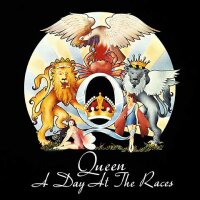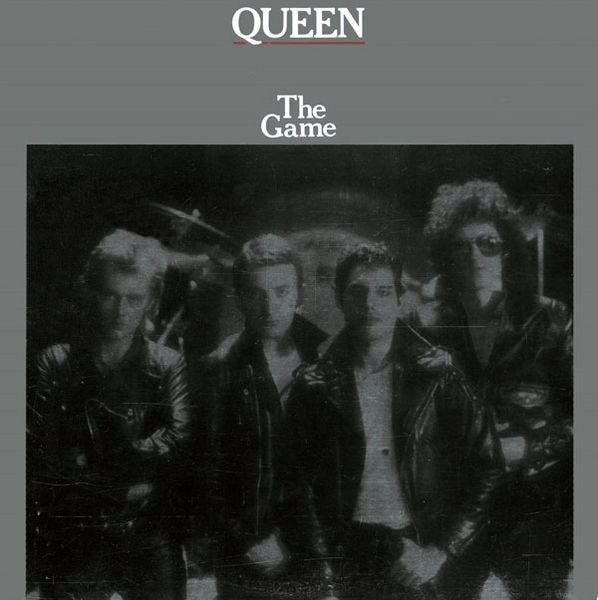02-24-1977 – A Day at the Races- Rolling Stone (Issue 223)
by DAVE MARSH
The current consensus is that rock is well into its third generation. But the bands which have pulled the music furthest from its roots remain critically dismissed. There are reasons for such disdain. Lumped together as art-rock, such bands as the three above seem to threaten the artistic stature of anything less complex, or more simple. But it is even harder for hard-rock-oriented listeners to find rock at all in the styles of bands as diverse as Focus, Gentle Giant, Be-Bop Deluxe, Boston and Kansas, the other young bands which share sounds or approaches similar to Genesis, Queen and Starcastle. Yet such music can’t be denied analysis forever. Liking it asks too much, perhaps, but listening is probably obligatory, at least for critics.
These groups are not art-rock in the sense that they confine their borrowings to orchestral classical music, as such progenitors as the Nice and Emerson, Lake and Palmer often did. Nor were they spawned in artistic communities such as the ones that nurtured Roxy Music or Patti Smith. For performers such as Genesis, Queen and Starcastle, rock is still the dominant influence. These third-generation bands have a mixed litter of second-generation antecedents: the Mothers of Invention, Cat Stevens, Procol Harum, Jimi Hendrix, the Beach Boys, Traffic, Jethro Tull, Yes, Phil Spector, King Crimson, the Beatles, Pink Floyd, the Yardbirds.
In the most noteworthy art-rock essay (contained in the Rolling Stone Illustrated History of Rock & Roll), John Rockwell calls such bands “eclectic experimentalists.” But until one attempts to assemble such a list of sources, it’s hard to see how awesomely accurate his term is. The eccentric combination of influences is what distinguishes most of these groups. The vocal structures of the Beach Boys, for instance, have influenced Queen as deeply as they have Eric Carmen. Yet Queen’s instrumentation owes more to Led Zeppelin, Yes and the Beatles. Starcastle are an inflection-accurate replication of Yes. Genesis are nearly free from overt emulation, but their debts to Jethro Tull and King Crimson hardly need ferreting out.
Still, the sensibility of these bands is discernibly different from that of the equally imitative third-generation heavy-rock acts like Aerosmith, Kiss and even Thin Lizzy, The heavy bands are, in some ways at least, attempting to recapture and redefine the spirit of the Rolling Stones and the Yardbirds. The eclectic experimentalists are more baroque—their goal is a rigorous, complicated structure rather than emotive resonance.
This sometimes takes the form of grand silliness. A Day at the Races is probably meant to be the sequel to Queen’s 1976 smash, A Night at the Opera, but nothing much has changed. Queen is the least experimental of such groups, probably because their commercial aspirations are the most brazen. They have managed to borrow all that’s frothiest from their influences, from the fake-orgasmic vocal contortions of Robert Plant to the semi-vaudevillian pop of the Beach Boys and Beatles. In addition, to cement their “seriousness,” they use instrumental effects which hint at opera in the same way that bad movie music palely evokes the symphony. Blessed with Freddie Mercury’s passable pop voice and guitarist Brian May, who manages to fragment and reassemble the guitar styles of Jimmy Page, Jeff Beck and Eric Clapton in interesting, if pedestrian, ways, Queen will probably top the charts until one or the other of its leaders grows restless and spins off another version.
Fountains of Light is not the sequel to Jackson Browne’s “Fountain of Sorrow.” It is the follow-up to Starcastle’s self-titled debut album of last year, a moderate hit. Starcastle might have been celebrated as the first American group to break the British eclectic-experimental hegemony. Unfortunately, Boston’s 2 million-selling debut album eclipsed them. But Starcastle has another distinction. It is the most blatantly imitative group ever assembled. Fountains of Light continues on the path of the band’s first album; from beginning to end, Starcastle can hardly be distinguished from Yes. The vocals are a perfect echo of Jon Andersen’s, the changes in tempo and dynamics are straight from the Yes catalog, the fascination with pop mysticism is identical (though this is a trait common to the genre). Occasionally, harder elements intrude, as though in assertion of a rougher Americanism, but never for long enough to challenge the feeling that one might be listening to the world’s first musical clone.
Genesis is closer to the mainstream of the form, and far superior to either Queen or Starcastle. Their assemblage of elements is more truly experimental than the simple recycling the others do, or at least it’s more interesting. The most noticeable ingredients are British folk, King Crimson-style space music and, lately, with the ascendance of vocalist (and drummer) Phil Collins, jazz rock. The last is abetted by the recent addition of percussionist Chester Thompson, a veteran of Weather Report and Frank Zappa’s Mothers.
Genesis is more listenable, though, mostly because its music is prettier. Its gracefulness is derived from British folk, in somewhat the same way that Jethro Tull’s was. Onstage, the guitars of Steve Hackett and Michael Rutherford are dominant, generating a kind of fire that’s as close as such bands come to rock & roll of the old order. Wind & Wuthering relies more heavily on Tony Banks’ synthesizer, which costs them some bite but lends a feel that is more pop. Rutherford’s “Your Own Special Way” is a first-rate pop song, somewhat like the Yes hit, “Roundabout.”
What is most surprising about these bands is that they are not the cold technicians that hostile, dismissive criticism often paints them. Indeed, Wind & Wuthering is more melodically innovative than most of the new mainstream rock. What really leads to the charges of iciness is something else, I think — a kind of class-based cult of musicianship, which is truly arrogant because it refuses to articulate just what moods its complex structures are meant to evoke. Eclectic experimentalism is determinedly middle-class—thus, the general obsession with synthesizers and other gadgets, the devotion to science fiction and pop mysticism and, in the case of Genesis, a ruinous lyrical preoccupation with half-digested English literature courses. If pretty but empty describes most bands of this type, the emptiness is more lyrical than musical — somewhere, each of these groups is driving at a point having meaning to itself (and maybe its cult). Without accepting such folderol as Starcastle’s “Dawning of the Day” or Genesis’ “All in a Mouse’s Night” at face value, extracting meaning from the songs is like code breaking.
Still, the presumptuousness of Genesis in naming an album after a classic children’s tale and an Emily Brontë novel is no greater than that of Joni Mitchell on her equally obfuscatory The Hissing of Summer Lawns. The lyrics of “All in a Mouse’s Night” are no sillier than half of Goodbye Yellow Brick Road.
The excesses of others do not excuse these. Queen and Starcastle seem, like most rock right now, to be filling a marketing void—Led Zeppelin, the Beatles and Yes being inaccessible to varying degrees, they provide alternate product. But Genesis are doing something different than that. However haughty they may be about it, and however short of the mark they may fall, they are at least attempting to make art of their own particular jumble. This seems, to me at any rate, a much more worthy goal than simply churning out another million-seller—even if the producers of successful product rather than failed art are the ones I am more comfortable listening to.




